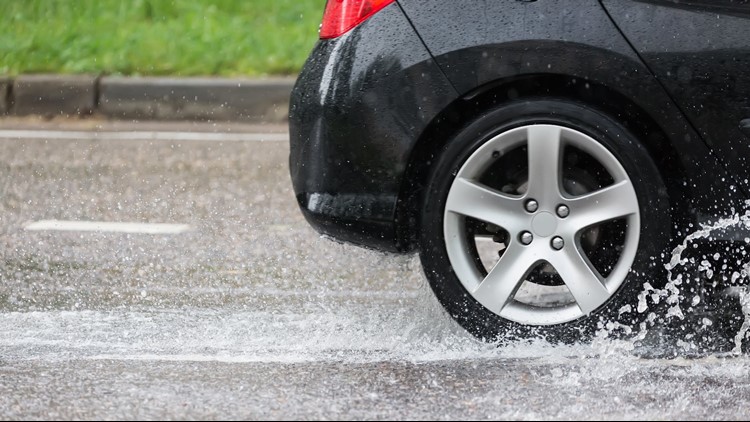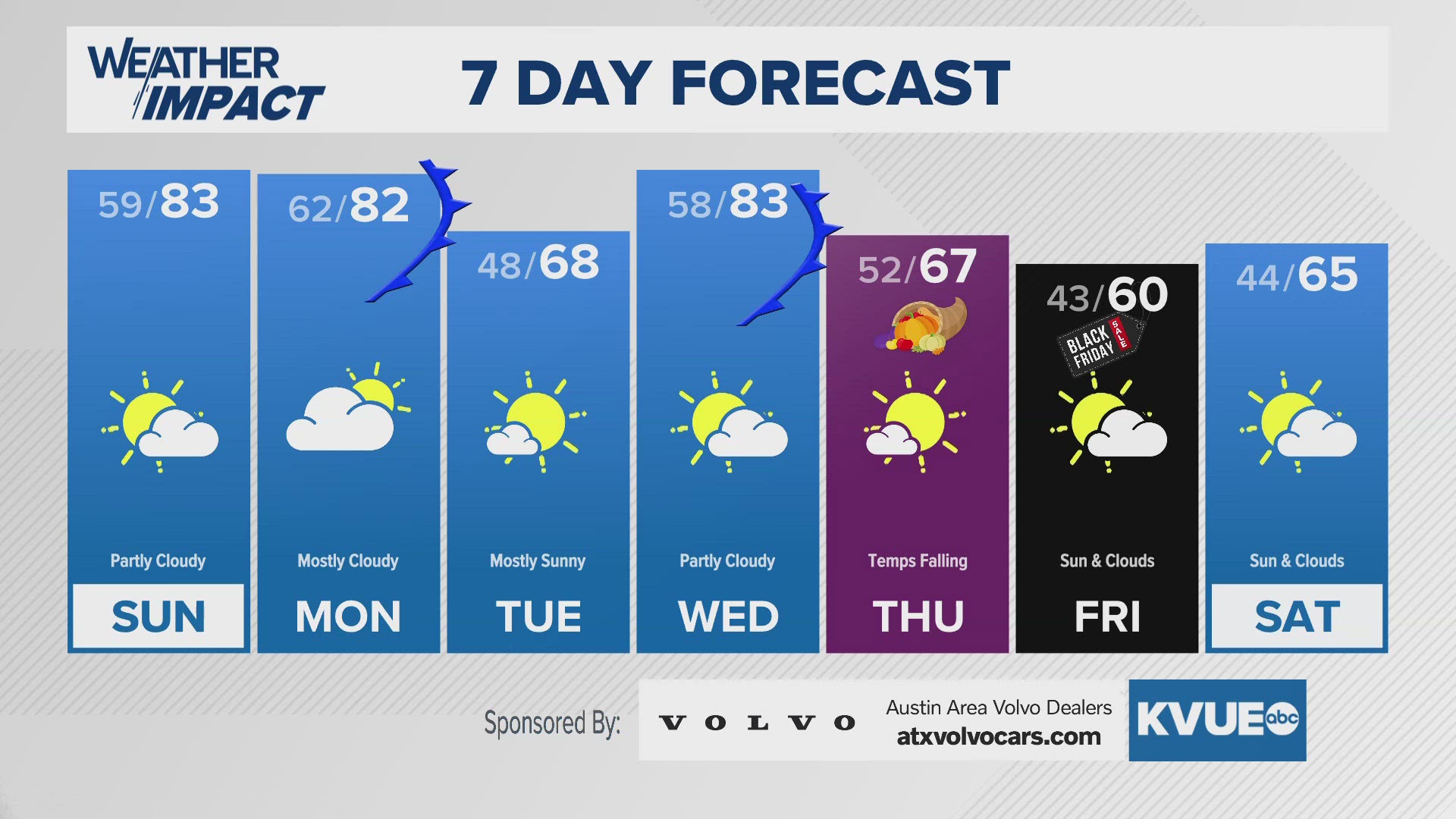AUSTIN — Rain in Central Texas can be a drag.
Not only do you have to worry about delay times, but you also have to worry about your safety and making it to your destination without colliding with the vehicle in front of you.
That's why KVUE has put together the most crucial tips for driving on wet roadways that you can keep in your mind for the next time the roads get slippery, according to the Texas Department of Insurance's Division of Worker's Compensation.
Keep your car in tip-top shape
It will save you a lot of time and energy before you head out on a wet roadway to prepare before the storms come. You'll want to make sure to keep your wiper blades fresh, maintain tire pressure and tread and replace old tires.
Before driving off
Check the weather to see if it's a heavy thunderstorm or if there is significant lightning. According to DWC, both of these scenarios can create dangerous driving conditions that you should avoid.
If it you aren't dealing with the above situations and you're clear to drive, you should turn on your headlights in the overcast conditions. It will help you see the roadway better and other drivers around you.
While on the roadway
DWC said it's important to SLOW down. The Federal Motor Carrier Safety Administration recommends slowing your speed down by a third on wet roadways. Also if you see a flooded roadway, TURN AROUND, DON'T DROWN.
Here are some other important tips:
- Avoid sharp or quick turns
- Don't tail the vehicle in front of you; increase the three-second rule
- Stick in the middle lanes to avoid pooling water in the outside lanes
- Slow down if you see a low-hanging tree, building, fence, or hedge
- DWC says this could be a sign that the road ahead is flooded
- Don't follow large trucks or buses too close
- Drive in the tracks of the vehicles in front of you
- Don't drive with cruise control on
- Don't ever drive beyond the limits of visibility
Hydroplaning
According to DWC, hydroplaning happens when your tires lose contact with the roadway. Your vehicle could then lift up and slide on a thin layer of water between the tires and road, which could cause you to skid into another lane.
These three factors contribute to your likeliness of hydroplaning:
- vehicle speed
- water depth: deep water decreases tire traction
- tire tread depth: this should be checked every few months by a professional
What to do when you hydroplane
If you find yourself in a situation where you're hydroplaning, DWC said you should not use your brakes or turn quickly. Instead, ease your foot off the gas, slowing the vehicle down. Turn your steering wheel in the direction of the skid as you begin to feel traction on the road again. Then, begin to straighten your wheels again.
Go here for the full fact sheet from the Texas Department of Insurance.



